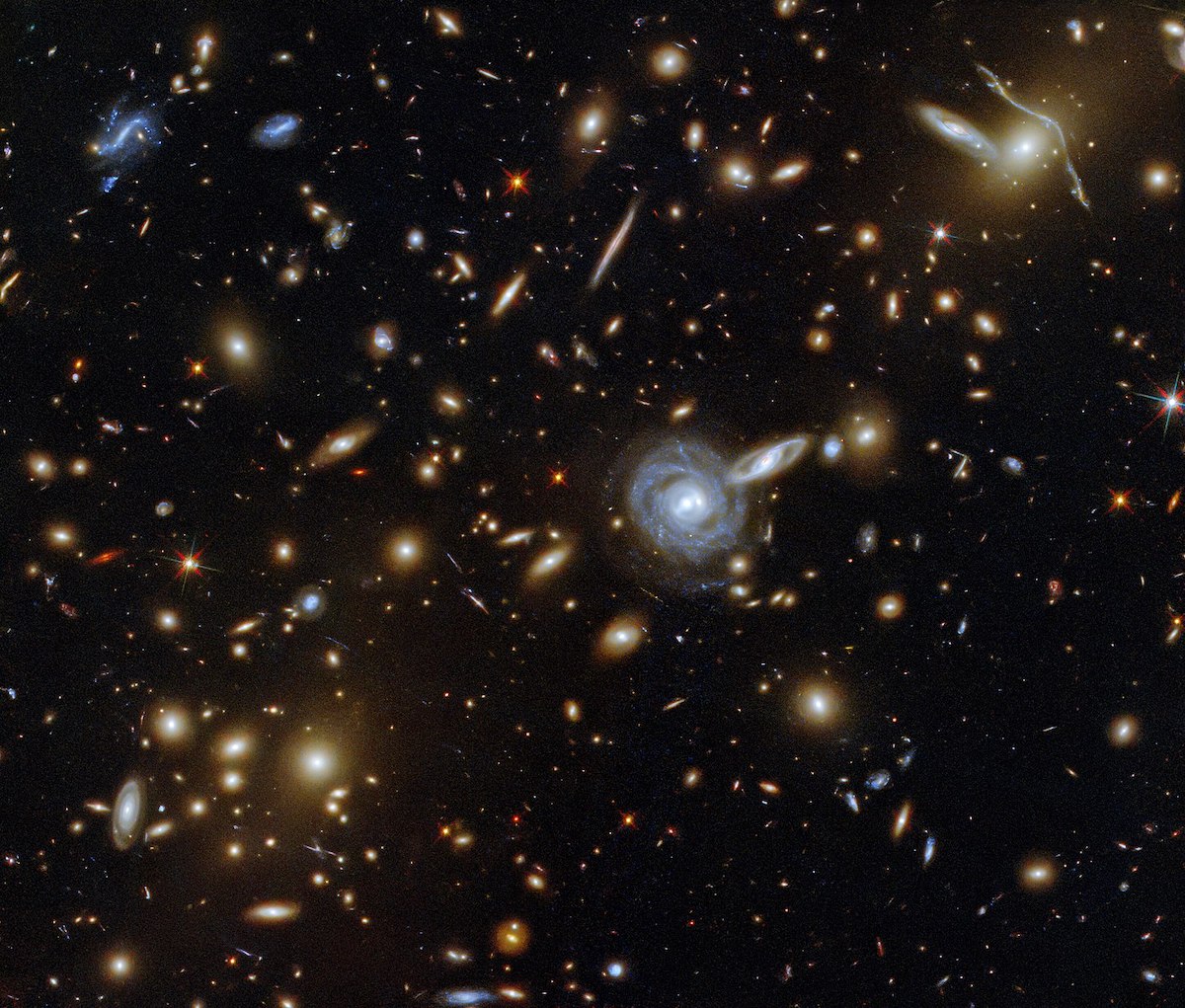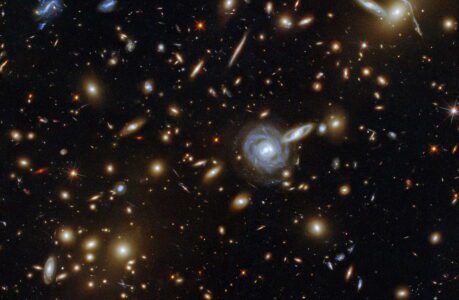The New General Catalogue of Nebulae and Clusters of Stars (NGC) is a catalogue of deep-sky objects, including galaxies, nebulae, and star clusters. It was first compiled by John Louis Emil Dreyer, a Danish-Irish astronomer, in 1888. Dreyer’s catalogue was an updated version of the General Catalogue of Nebulae and Clusters, which was compiled by his predecessor, William Herschel.
The NGC contains over 13,000 objects, each identified by a unique number. The catalogue was compiled using observations made by various astronomers, including William Herschel, John Herschel, and Lord Rosse. The NGC was initially published as a book, which contained descriptions and sketches of each object.
The NGC catalogue has significant historical and scientific importance. It was the first comprehensive catalogue of deep-sky objects, and its publication marked a major milestone in the field of astronomy. The NGC is still widely used today by amateur and professional astronomers, and many telescopes are equipped with NGC catalogues to aid in their observations.
The NGC catalogue contains a wide variety of deep-sky objects, including galaxies, star clusters, and nebulae. Some of the most well-known objects in the catalogue include the Orion Nebula (NGC 1976), the Whirlpool Galaxy (NGC 5194), and the Sombrero Galaxy (NGC 4594). Each object in the catalogue has its own unique set of characteristics and features, which can be studied and analysed by astronomers.
In addition to the NGC, there are several other catalogues of deep-sky objects, including the Index Catalogue (IC), the Revised New General Catalogue (RNGC), and the Principal Galaxies Catalogue (PGC). These catalogues are all based on the NGC, and each one includes additional objects that were not listed in the original catalogue.
What’s the difference between the NGC and Messier catalogues
The Messier catalogue and NGC differ in their origins, purpose, and scope. The Messier catalogue was created to help identify comets and contains a smaller number of objects, while the NGC is a comprehensive catalogue of deep-sky objects used by professional astronomers and contains many more objects.
The Messier catalogue was compiled by the French astronomer Charles Messier in the 18th century. Messier was primarily interested in finding comets, and he created the catalogue to help him distinguish between comets and other faint, fuzzy objects in the sky that could be mistaken for comets. The Messier catalogue contains 110 objects, including galaxies, nebulae, and star clusters, all of which are visible from the northern hemisphere. The objects in the Messier catalogue are designated by an “M” followed by a number (e.g., M42 is the Orion Nebula).
In contrast, the NGC was compiled by John Louis Emil Dreyer in the 19th century. Dreyer’s goal was to create a comprehensive catalogue of deep-sky objects, including not only Messier’s objects but also many others. The NGC contains over 13,000 objects, including galaxies, nebulae, and star clusters, and each object is designated by an “NGC” number (e.g., NGC 1976 is also the Orion Nebula).
While the Messier catalogue is primarily a list of interesting and easily visible objects for amateur astronomers, the NGC is a much more comprehensive catalogue intended for use by professional astronomers. The NGC includes many faint and difficult-to-observe objects that are not included in the Messier catalogue.
The major NGC objects
The New General Catalogue (NGC) is a comprehensive catalogue of deep-sky objects, including galaxies, nebulae, and star clusters. It contains over 13,000 objects, each identified by a unique NGC number. Here are some of the major NGC objects:
- Orion Nebula (NGC 1976): This is one of the most well-known and easily visible nebulae in the sky. It is a stellar nursery where new stars are being formed.
- Andromeda Galaxy (NGC 224): This is the nearest galaxy to our own Milky Way and is visible with the naked eye from a dark sky location.
- Whirlpool Galaxy (NGC 5194): This is a spiral galaxy that is located in the constellation Canes Venatici. It is famous for its distinctive spiral arms and is a popular target for amateur astronomers.
- Ring Nebula (NGC 6720): This is a planetary nebula located in the constellation Lyra. It is formed from the outer layers of a dying star that has shed its outer layers.
- Sombrero Galaxy (NGC 4594): This is a galaxy located in the constellation Virgo. It is notable for its distinctive shape, which resembles a sombrero hat.
- Pleiades (NGC 1432): This is a star cluster located in the constellation Taurus. It is easily visible with the naked eye and is also known as the Seven Sisters.
- Crab Nebula (NGC 1952): This is a supernova remnant located in the constellation Taurus. It was created by the explosion of a star that was first observed by Chinese astronomers in 1054 AD.
- Hercules Cluster (NGC 6205): This is a globular star cluster located in the constellation Hercules. It contains hundreds of thousands of stars and is one of the brightest globular clusters in the sky.
These are just a few of the many notable objects contained within the NGC catalogue. Each object in the NGC has its own unique characteristics and features that make it a fascinating target for observation and study.
Does the NGC number have any significance
Yes, the NGC (New General Catalogue) number assigned to each deep-sky object in the catalogue has a specific significance. The NGC number is used to identify and catalogue each object and is also used in scientific research and communication among astronomers.
The NGC catalogue was first compiled by John Louis Emil Dreyer in 1888 and contains over 13,000 objects, each assigned a unique NGC number. The NGC number is a combination of the letters “NGC” followed by a number, such as NGC 1976 for the Orion Nebula.
The significance of the NGC number lies in the fact that it provides a standardised and unique identification for each deep-sky object in the catalogue. This makes it easier for astronomers to communicate and share information about specific objects.
The NGC number also provides some information about the position of the object in the sky. The first two digits of the NGC number indicate the right ascension of the object, while the last two digits indicate its declination. For example, NGC 1976 is located at a right ascension of 05h 35m 17.3s and a declination of -05° 23′ 28″.
In summary, the NGC number assigned to each deep-sky object in the catalogue serves as a unique identifier and also provides some information about the object’s position in the sky. This makes it easier for astronomers to communicate and share information about specific objects and facilitates scientific research.
In conclusion, the New General Catalogue of Nebulae and Clusters of Stars is a significant and comprehensive catalogue of deep-sky objects. It has played a crucial role in the history of astronomy and is still widely used today by astronomers around the world. Its detailed descriptions and sketches of each object have allowed astronomers to study and understand the universe in ways that were previously impossible.

